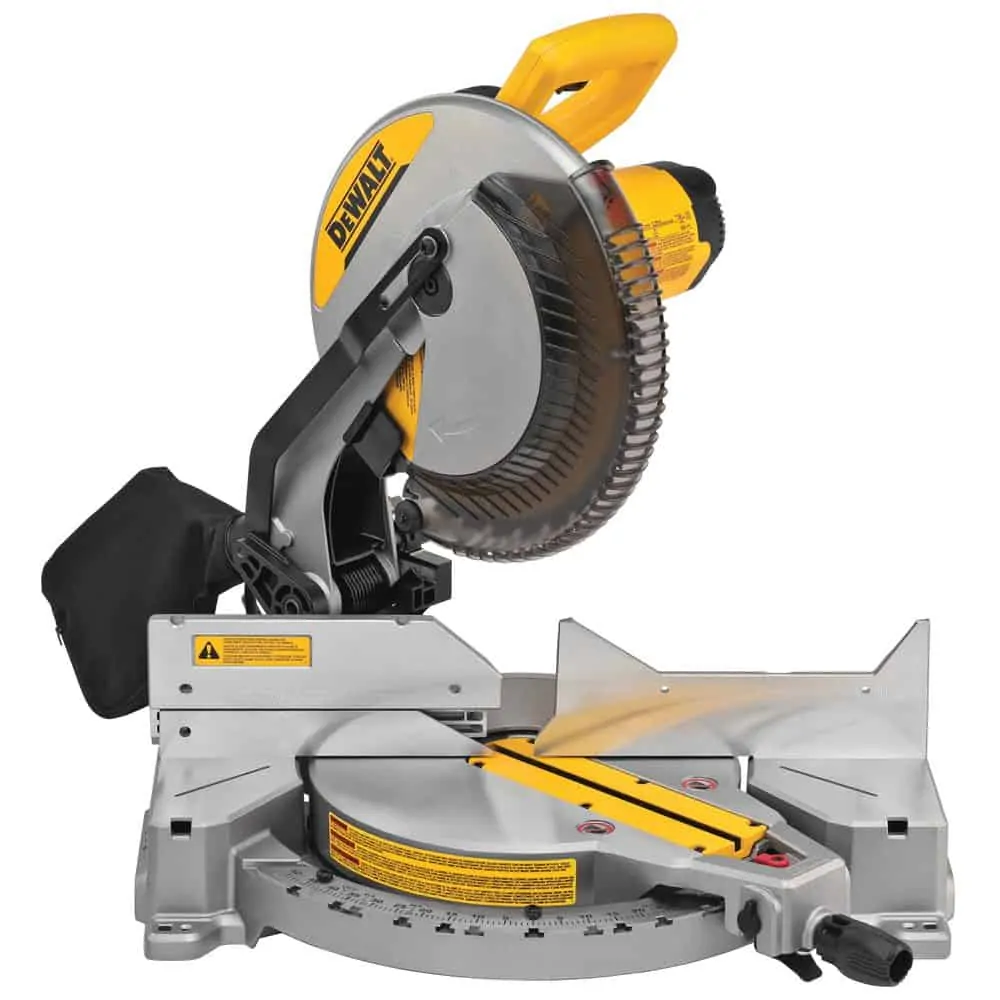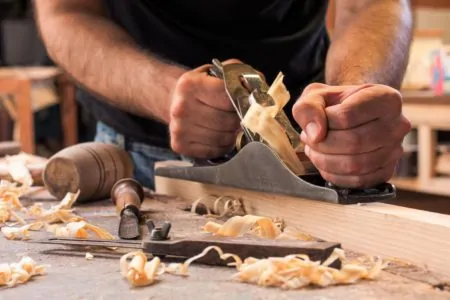Bevel miter saws are an invaluable tool for carpenters and DIY enthusiasts, allowing you to make precise angled cuts for projects such as doorframes. However, you will need to decide whether you want a single or double bevel saw.
Both saw types are excellent tools that will provide speed and precision when making miter or bevel cuts. However, they function slightly differently, with double-bevel saws offering extra versatility.
In this article, we will take a closer look at single vs double bevel miter saws and how they will each allow you to easily make angled cuts. This should help you decide which type you want in your workshop or garage.
Key Takeaways
- Single bevel miter saws cut in one direction and are less expensive, lighter, and easier to use, making them popular for DIY projects.
- Double bevel miter saws cut in both directions, allowing for faster and more accurate work, but are more expensive and require more skill to operate.
- Both saw types can create precise cuts for projects like doorframes and crown molding, but the choice depends on your skill level, budget, and project needs.
- Practice and familiarity with cutting angles are key to achieving clean and polished results with either type of saw.
What is a Miter Saw?
A miter saw is a powered version of a traditional hand miter saw. It does the same job, but with greater speed and accuracy. It has a circular cutting blade mounted on a pivoting arm. This arm allows you to select different angles when you cut, allowing you to cut numerous pieces of wood in exactly the same way.
A miter saw can make angled cuts into wood, known as miter cuts. Or, it can make bevel cuts along the edge of the material.
A miter saw can make four types of cuts:
- Cross-cut: A cut made at a 90-degree angle.
- Miter cut: A cut made at a 45-degree angle, usually to fit flush with another miter cut. Picture frames are an ideal example.
- Bevel cut: An angled cut on the edge of the wood, such as a doorstop.
- Compound cut: Cuts the angle and bevel at the same time.
What Is a Bevel Cut on a Miter Saw?
A bevel cut is a sloped horizontal or vertical surface or edge, used in carpentry and stonemasonry. It is used to fit two pieces of material together with a strong, neat finish.
What Is Bevel Capacity?
Bevel capacity is the maximum angle that a saw will reach. There are usually preset angles at the most popular positions, such as 45 and 90 degrees, for ease of use. You will also be able to set other angles but can use the presets as a guide.
How Do You Use Bevel Saws?
A bevel saw is ideal for making cuts for crown moldings, picture and door frames, window casing, and many other items. Bevel cuts help you achieve symmetry and make joints less obvious, which makes them far more presentable.
Single Bevel Miter Saws

A single bevel miter saw cuts in a single direction by tilting to one side (typically the left).
It allows you to select a cutting angle by adjusting a handle on the base. If you want to change the direction of the cut, you will need to turn over the piece of material you are cutting. This requires some extra calculation to ensure the angles of the cuts will match each other.
Single bevel miter saws are useful for more straightforward tasks and will help you achieve quick, precise results. They allow you to make extremely accurate cuts, so they are suitable for both DIY and professional use.
When Do You Need a Single Bevel Miter Saw?
A single bevel miter saw is a popular option among DIY enthusiasts as they are cheaper, simpler to use, and can still create excellent decorative finishes. They can achieve the same results as dual bevel saws, but they require some more time and patience.
They are ideal for window frames, door frames, and decorative moldings in your home.
Single bevel miter saws are also lighter, making them more maneuverable if you need to take your equipment with you to sites. This is particularly important if you are a professional and work on multiple projects at a time.
Pros
- Less complicated to use
- Often much cheaper dual bevel miter saws
- Lighter and easier to transport
- Suitable for home projects and DIY enthusiasts
Cons
- Need to turn the item being cut to change the direction of the miter
- Will take longer to complete your task
- Might require a larger workspace if you need to turn the item being worked on
Double Bevel Miter Saws

Unlike a single-bevel miter saw, double-bevel saws have the ability to pivot left and right, enabling you to make matching cuts in both directions. This means you won’t need to flip the piece of material you are cutting, helping you achieve your task more quickly.
When Do You Need a Dual Bevel Miter Saw?
A double bevel miter provides greater flexibility to make complex cuts in a shorter time. It is the ultimate precision saw that delivers excellent results without needing to make extra calculations and maneuver the piece you are cutting.
A major advantage is that a double-bevel miter saw reduces the risk of human error. As you won’t have to turn the piece over and realign the cuts when you want to change direction, you should be able to achieve a neater finish.
Pros
- No need to adjust the material
- Makes faster cuts
- Better accuracy
- Reduces human error
Cons
- More expensive
- Complex to operate
Single vs. Double Bevel Miter Saw
There are pros and cons to both single and double-bevel miter saws. To make the comparison a bit clearer, we have put together a quick guide that should help you see the benefits of each at a glance.
| Features/Benefits | Single Bevel Miter Saw | Double Bevel Miter Saw |
|---|---|---|
| Cost | $$ | $$$ |
| Ease of Use | **** | *** |
| Convenience | *** | ***** |
| Skill level needed | *** | **** |
| Speed | *** | ***** |
| Maneuverability | ***** | *** |
FAQs
Which Saw Is Right for You?
There is no clear winner in the single bevel vs double bevel miter saws debate. Which tool is the better option for you will depend on your skill level, budget, and what you need to use it for.
A double bevel miter is more versatile and will allow you to work far more quickly. However, they are more expensive, heavier, and require greater skill to operate.
If you don’t need a professional-grade miter saw or don’t anticipate using it very frequently, you could potentially save a lot of money by choosing a single bevel saw instead.
A single bevel miter should do an equally good job and still provide a beautiful finish. You will just need to accept that your projects might take a bit longer to complete.










